SYLVAN HEIGHTS BIRD PARK FAST FACTS
LOCATION: Sylvan Heights, NC
HOURS: 9am-4pm daily (closed Mondays)
COST: $12.84 Adults, $11.77 Seniors (62+), $9.63 Children (3-12), under 3 are FREE
TIME TO COMPLETE: 2-3 hours
ACCOMODATIONS: Large parking lots, public restrooms, restaurant and Gift Shop
Zoos always have the challenge of creating a natural environment for the animals while also ensuring the paid visitors have great views of the wildlife. The challenge can be even greater when the wildlife are birds. North Carolina’s Sylvan Heights Bird Park in Scotland Neck does an excellent job of balancing the two needs. In many of the exhibits there are nets that keep the birds inside but still allow for good viewing. There are a few enclosed areas like the “Wings of the Tropics” and “The Landing Zone” but most are outside.
Originally conceived as a breeding center for waterfowl, Sylvan Heights gradually evolved into a collection of exotic and rare birds from around the world. It officially opened to the public as a bird park in 2006 and currently has more than 55,000 visitors a year. The 18-acre park, featuring over 2,000 different birds, can easily be seen on foot in just a few hours. The entire park, and most of the trails are paved to be stroller and wheelchair accessible.
Zoos always have the challenge of creating a natural environment for the animals while also ensuring the paid visitors have great views of the wildlife. The challenge can be even greater when the wildlife are birds. North Carolina’s Sylvan Heights Bird Park in Scotland Neck does an excellent job of balancing the two needs. In many of the exhibits there are nets that keep the birds inside but still allow for good viewing. There are a few enclosed areas like the “Wings of the Tropics” and “The Landing Zone” but most are outside.
Originally conceived as a breeding center for waterfowl, Sylvan Heights gradually evolved into a collection of exotic and rare birds from around the world. It officially opened to the public as a bird park in 2006 and currently has more than 55,000 visitors a year. The 18-acre park, featuring over 2,000 different birds, can easily be seen on foot in just a few hours. The entire park, and most of the trails are paved to be stroller and wheelchair accessible.
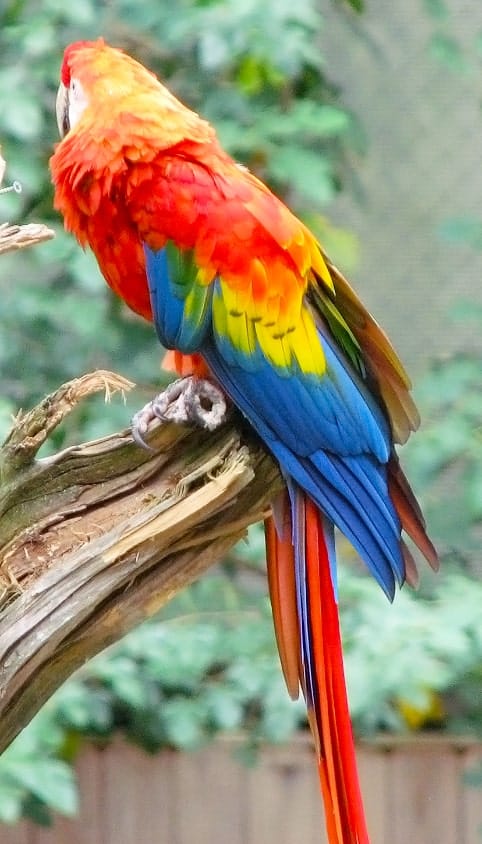
The park is setup in mostly geographic sections, by continent, with a few separate areas for exotic, endangered and bird feeding stations. There are also paths along the edges like the Nature Walkway, the Beaver Pond Blind and the Treehouse where you can commune a bit more with the natural surroundings. While we can’t show all of the sights we chose (10) of our favorite areas to share with you. Enjoy!
Multinational
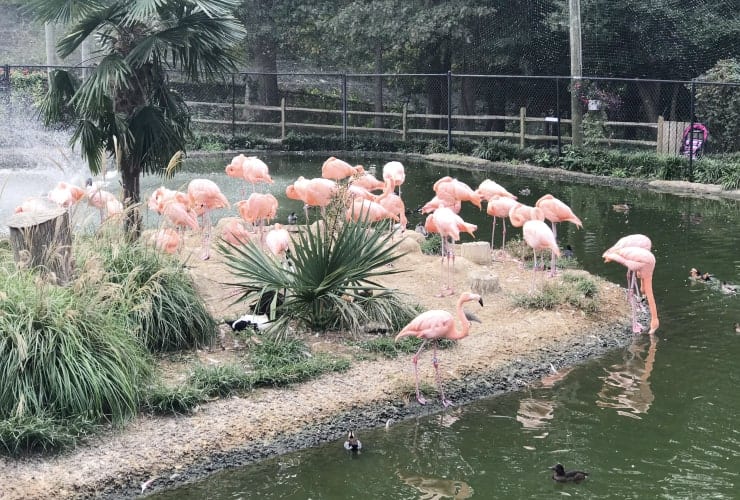
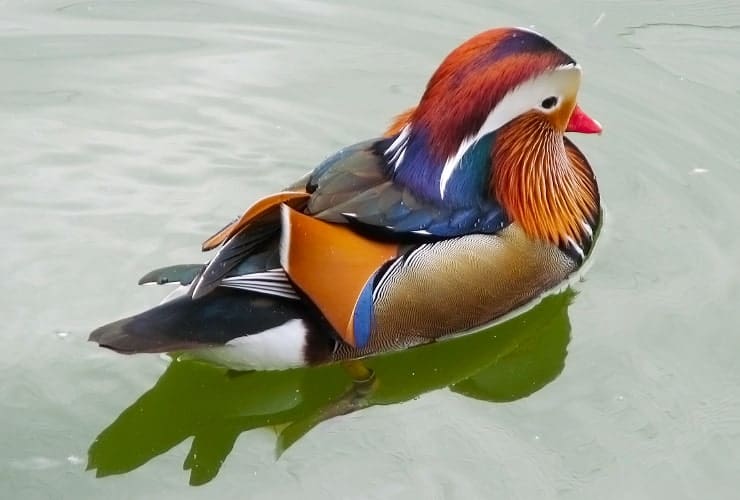
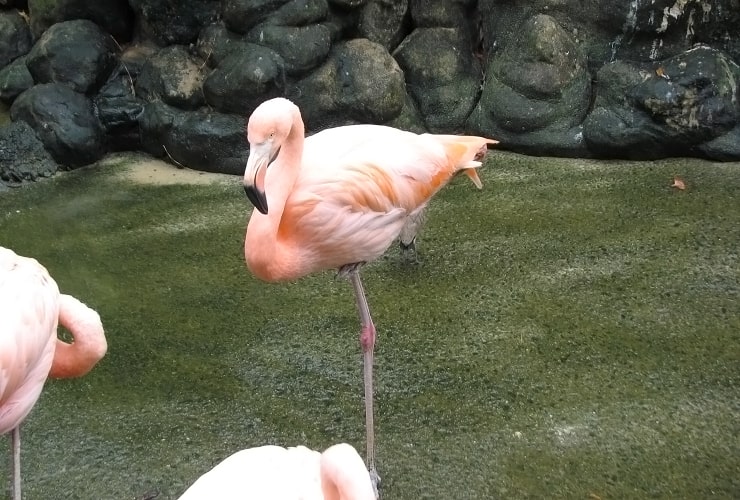
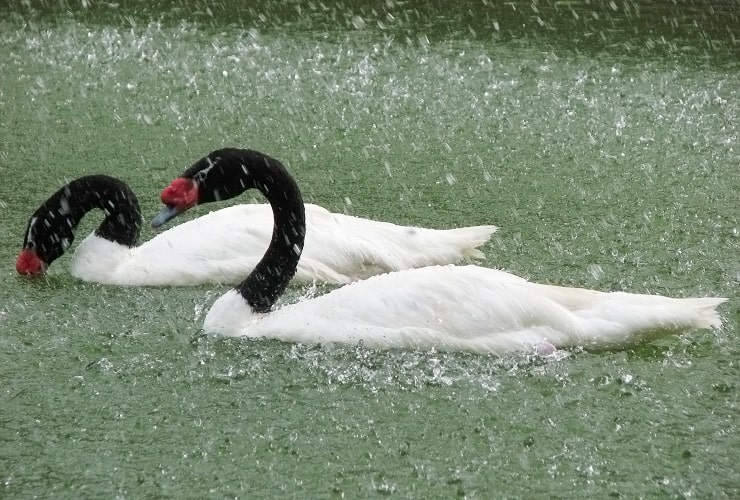
The Multinational section starts right as you walk through the main building onto the rear patio. You’re greeted by a pond with an interior island that is full of American Flamingos, Mandarin Ducks, Black-Necked Geese and a variety of different ducks like Redhead, Common Eider and Marbled Teal. The colorful Mandarin is one of the few ducks that are not prized by hunters since it is known to taste awful when eaten.
North America
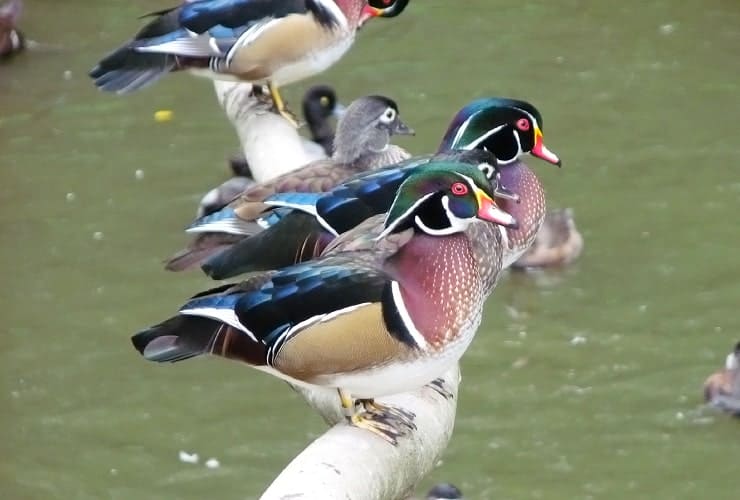
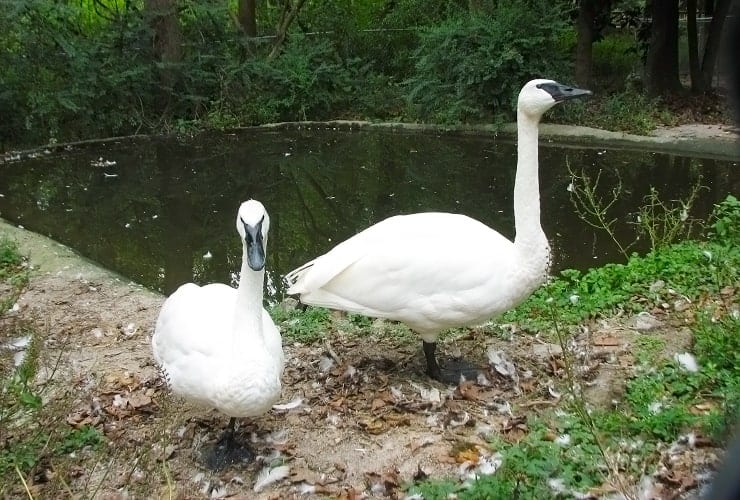
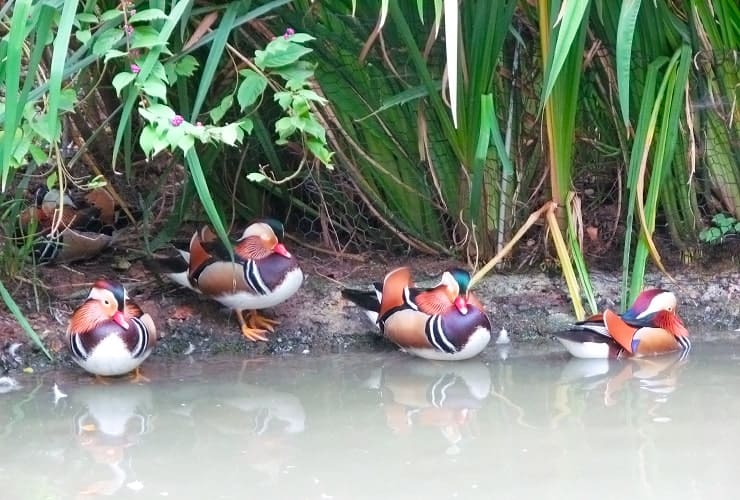
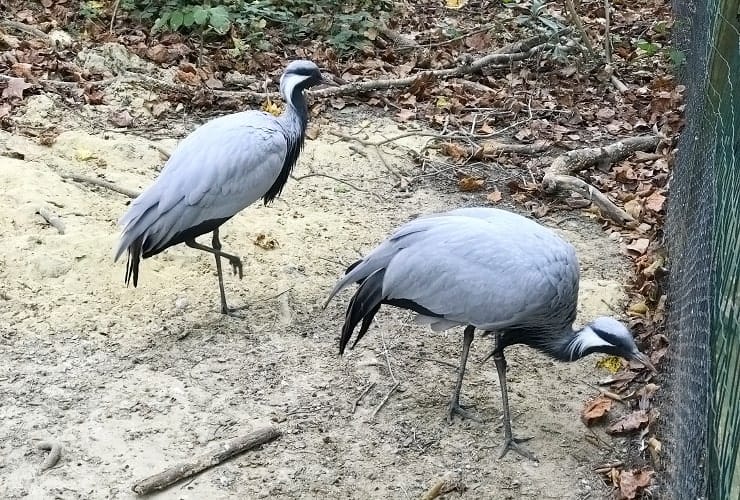
The North American area is broken into several different sections. There is an open area with a pond that features Greater Snow Geese, Nene, Bobwhite Quail and the distinctive (and long-legged) Black-necked Stilt. In there their own isolated areas you can find such beauties as the Demoiselle Crane, the almost extinct Whooping Crane, the Barnacle Goose and the Mute Swan (which is not actually mute, just less loud than other swans).
The Landing Zone
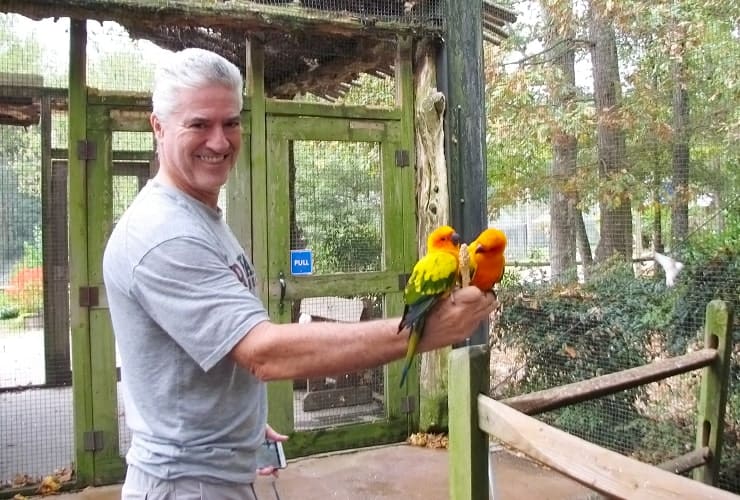
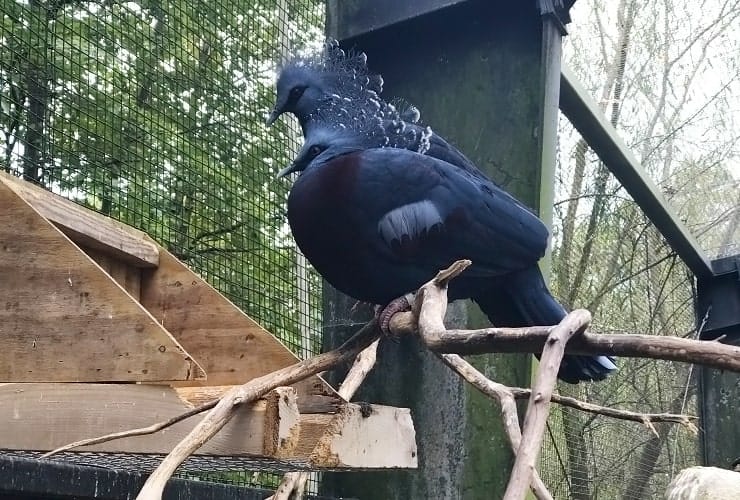
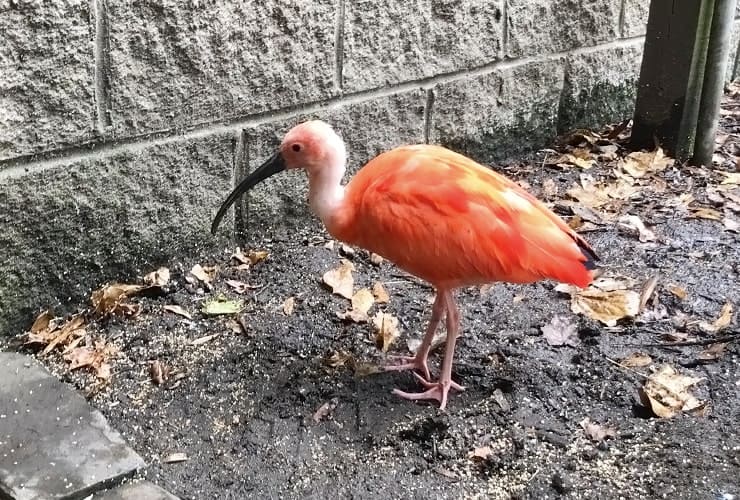
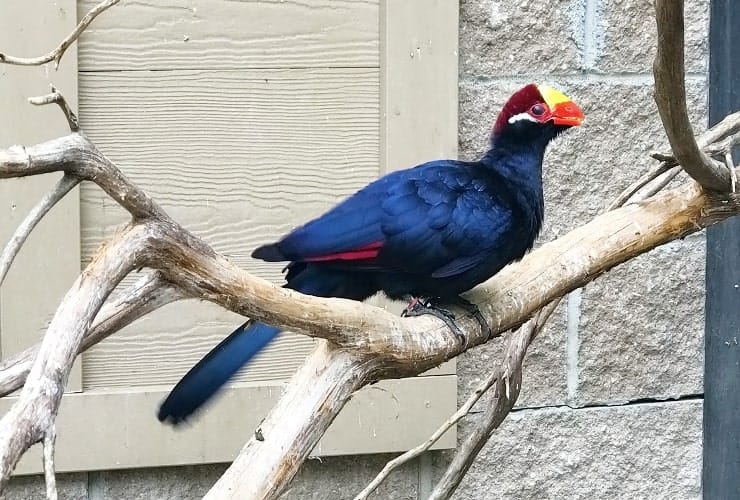
In “The Landing Zone” you may find a few new friends to “hang out” with. Should you chose to shell out a buck you can get thumb-depressors covered with bird seed. The Sun Conures and the Budgerigars will find you quickly and aggressively. They’re harmless but they may start nibbling your neck and arms so long as they think you have more food. A quick shake will get them off you so you can enjoy the other wide assortment of exotic birds including Blue-crowned Pigeons, Mulga Parrots, a variety of Parakeets and American Flamingos.
South America
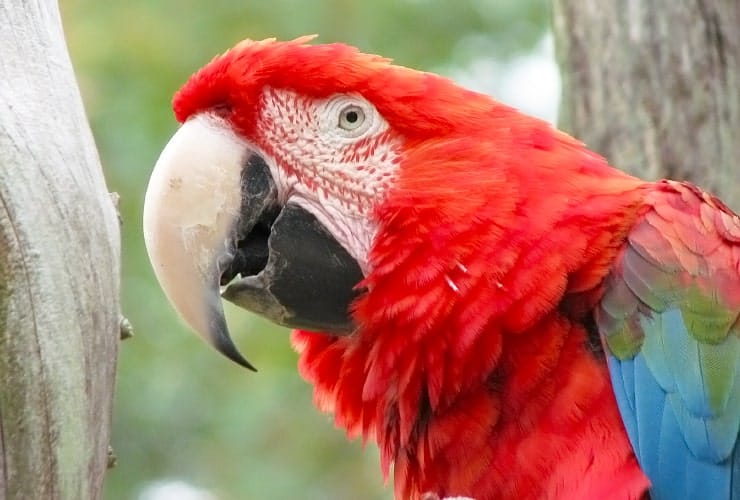
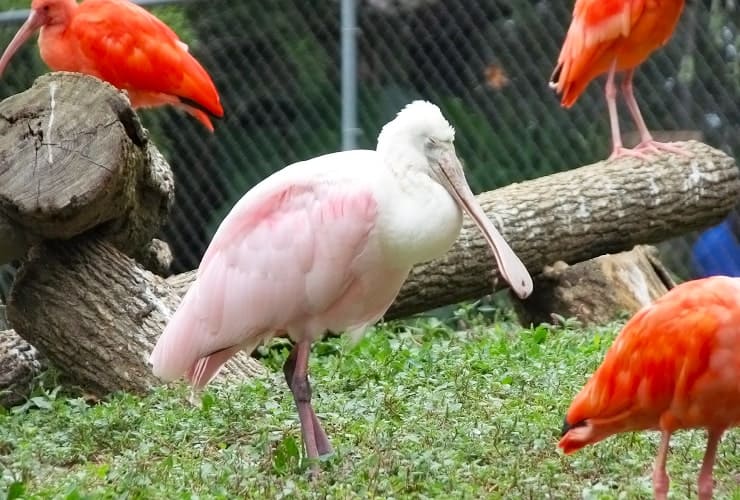
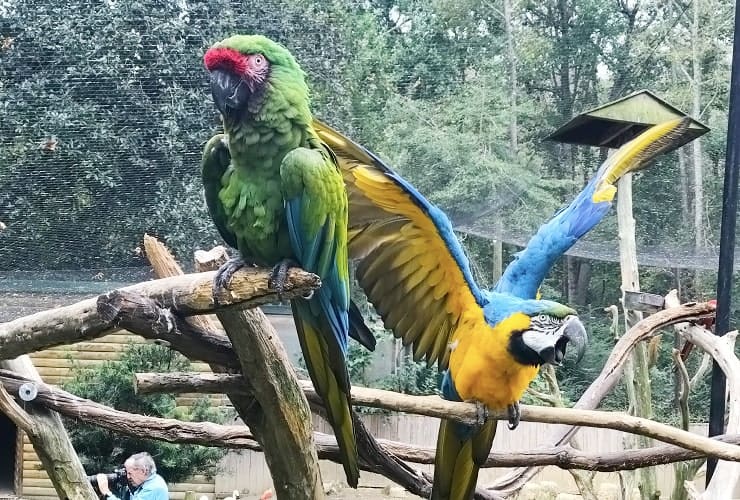
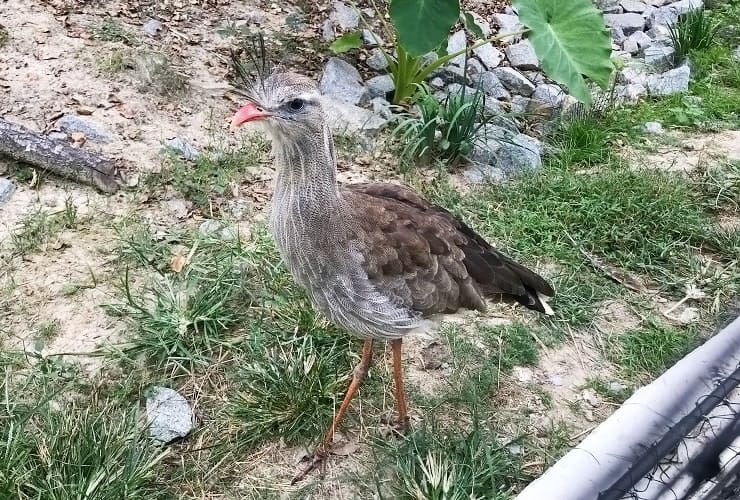
The South American area is also broken into several different sections. Some of the birds are isolated like the Red-legged Seriema with its ankle located half-way up its leg and one of the few birds with eyelashes. The primary area features the colorful Blue and Gold, Military, Scarlet and Green-winged Macaws. Very loud and territorial. We also spotted a Scarlet Ibis, an Argentine Ruddy Duck and a Crested Screamer.
Eurasia
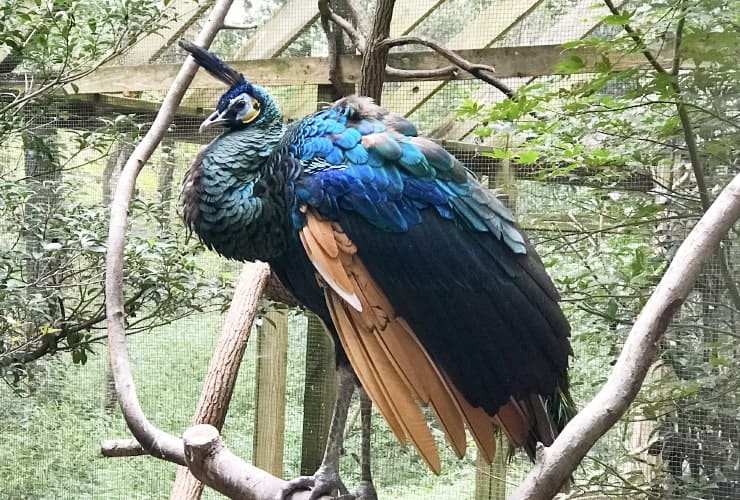
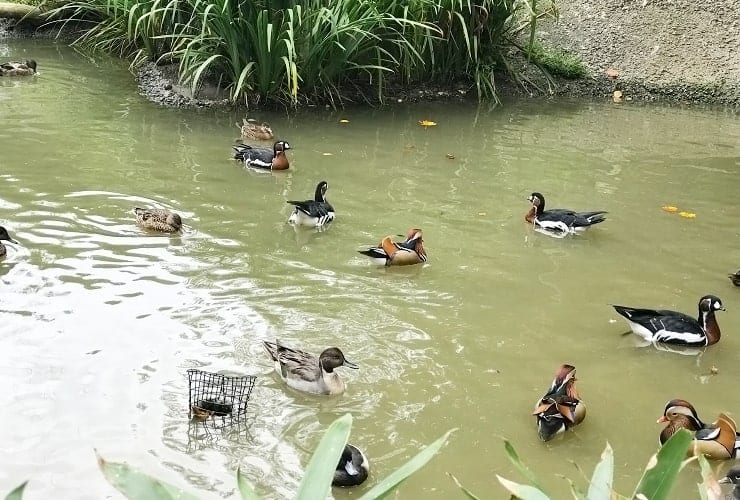
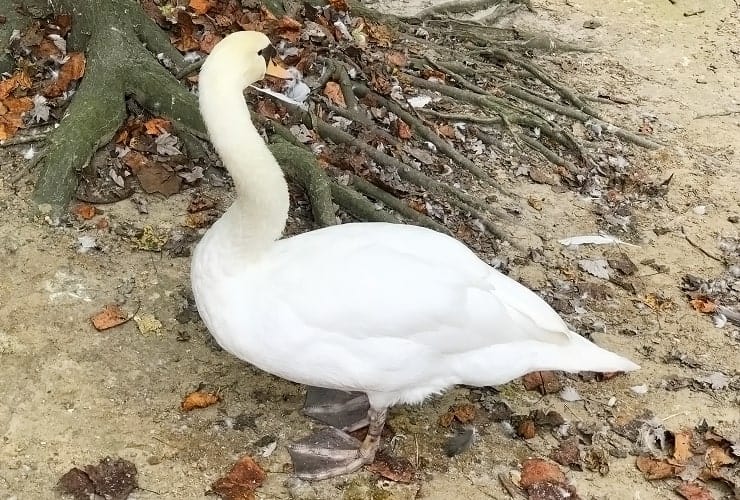
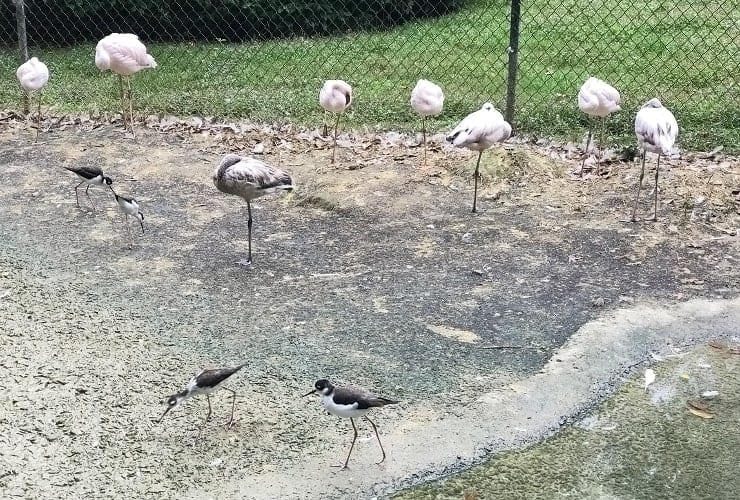
Eurasia combines a variety of species from both Europe and Asia. There is an open area with a pond that features a wide array of ducks and geese including European Wigeon, Red-crested Pochard and Greater Scaup. In separate areas are some of the more unique birds from the region. There are a pair of Eurasian Owls (they like to hang out along the top back of their cage and can be difficult to spot), a few endangered Green Peafowls and a colorful Himalayan Monal.
Nature Walkway
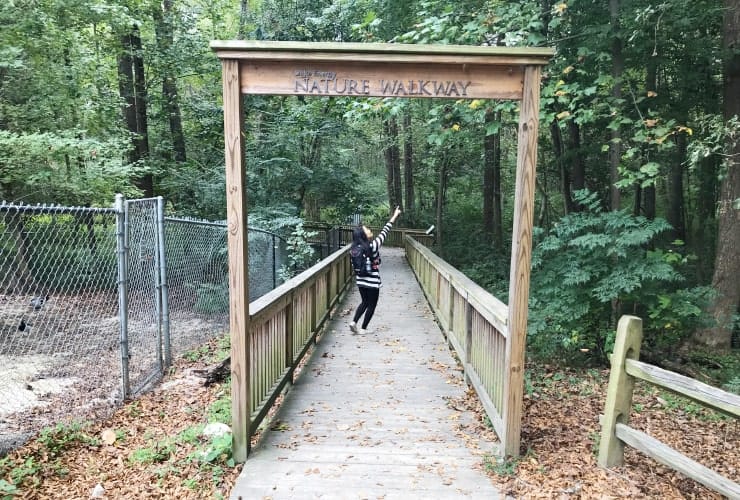
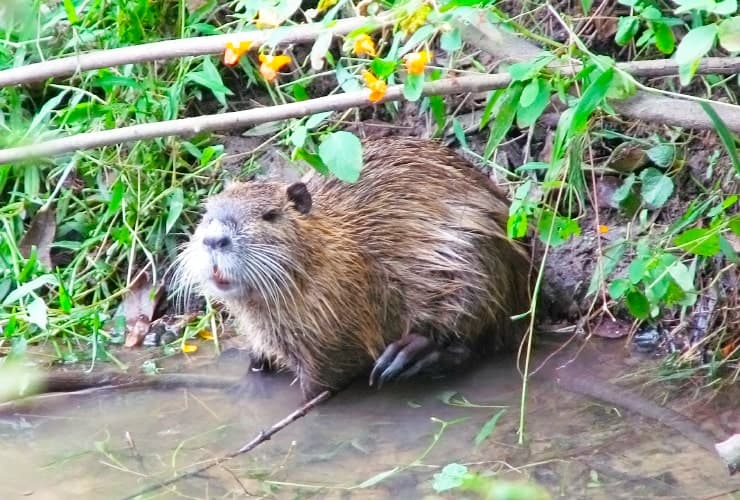
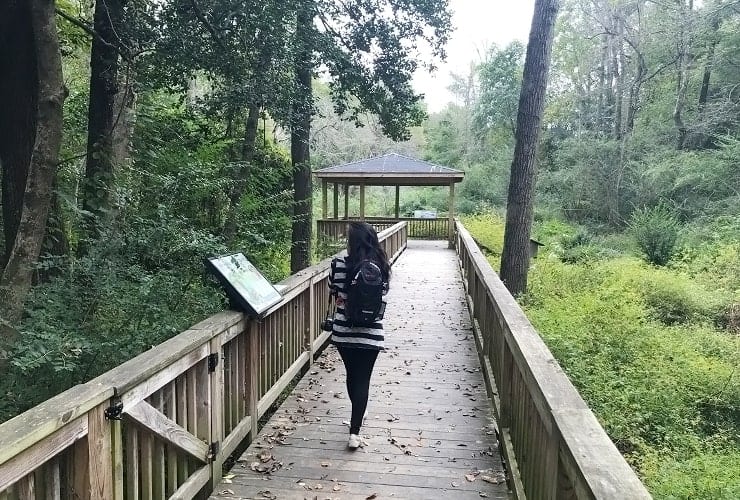
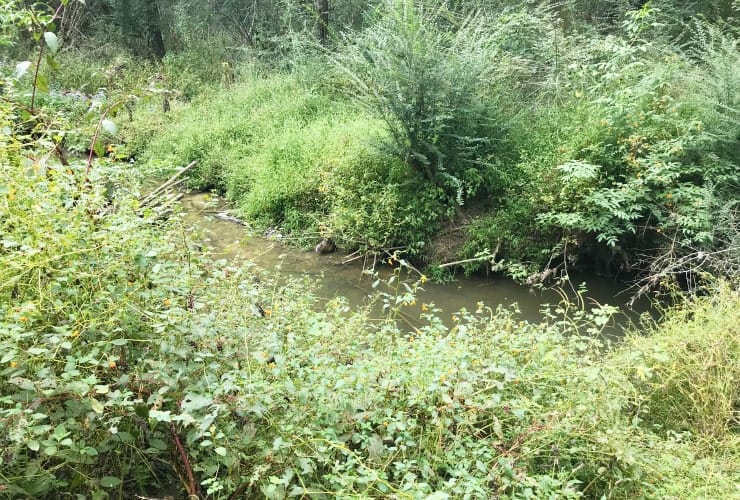
The Nature Walkway won’t necessarily provide many glimpses of wildlife but it is a wonderful journey into the wilderness. Along the way there are boards that detail why wetlands are so important to not only wildlife but for humans as well. You’ll learn a bit more about the resting and nesting habits of migratory birds and why they fly so far (hint: it’s all about food). Did you know that beavers have a bigger impact on their environment than any other animal, aside from humans? We got lucky and were able to see a local beaver at work.
Africa
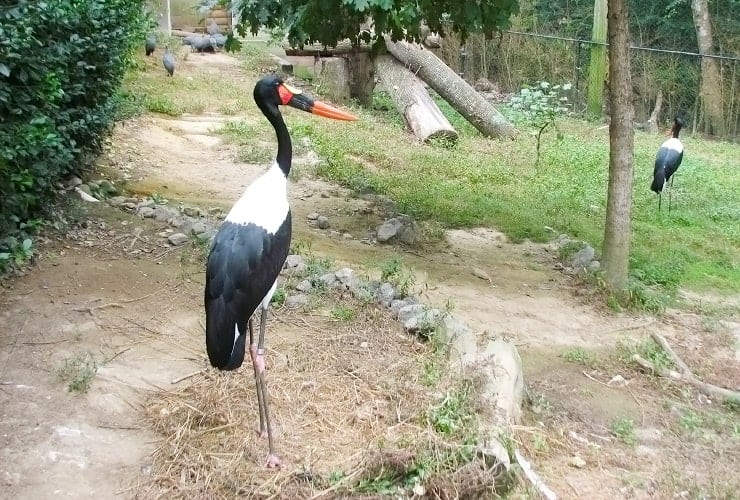
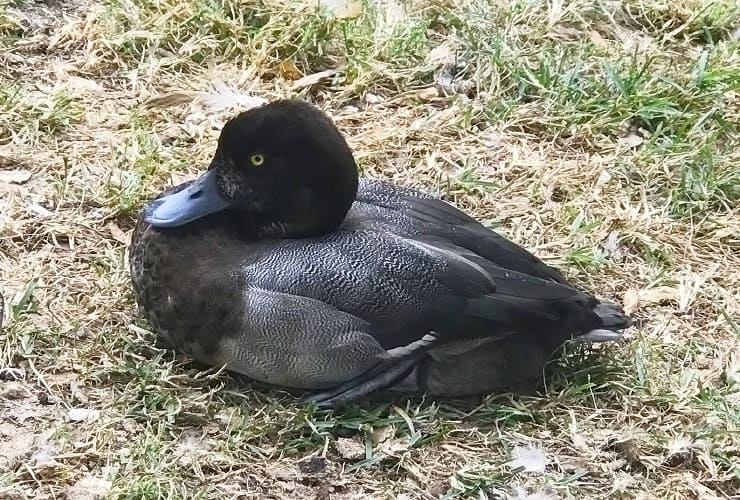
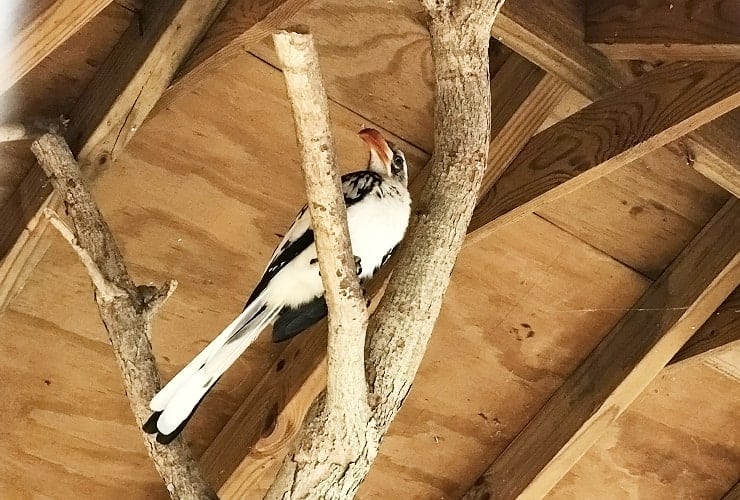
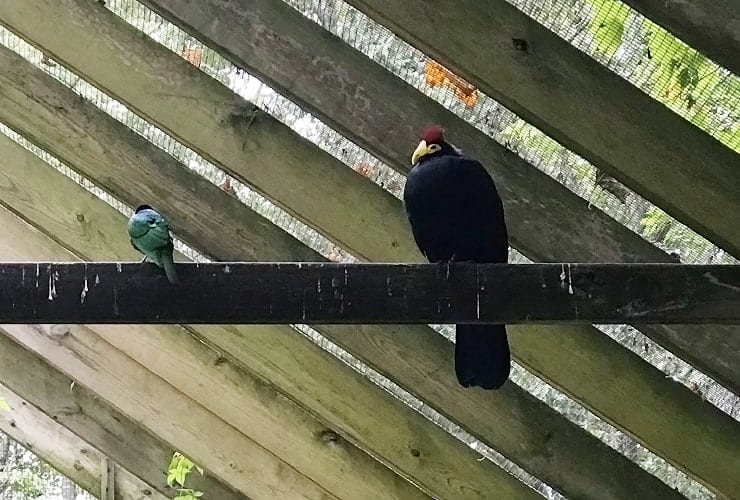
The Africa area is split so that, if you are looping around the outside, you won’t see all of it at once. If you’re approaching from the Eurasia area your first encounter will be with the magnificent Saddle-billed Stork, capable of standing up to 5 feet in height. Next there are enclosures housing a Ross’s Turaco and an Amazon Grey-winged Trumpeter then a Red-billed Hornbill who partner with mongooses for hunting purposes. On the other side you’ll encounter pond and open area for a variety of ducks and pigeons including Maccoa, Hartlanb’s and Meller ducks as well as some Spur-winged Plovers.
Wings of the Tropics
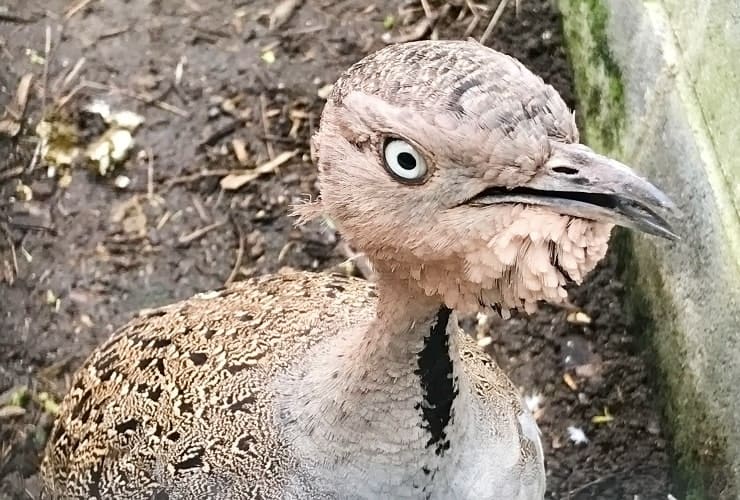
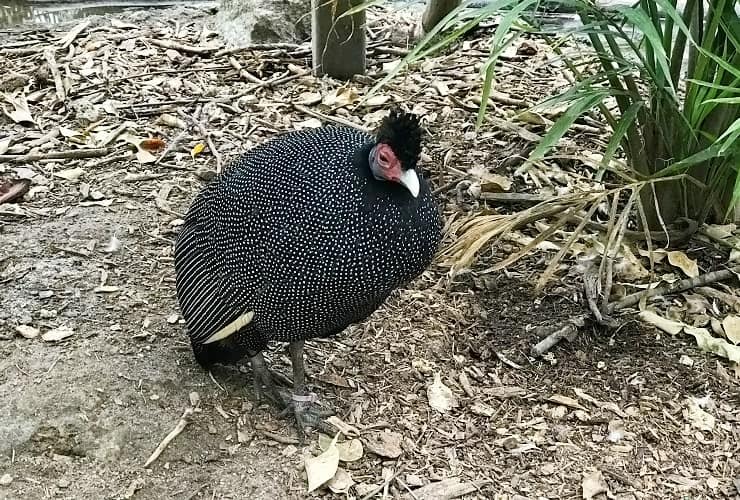
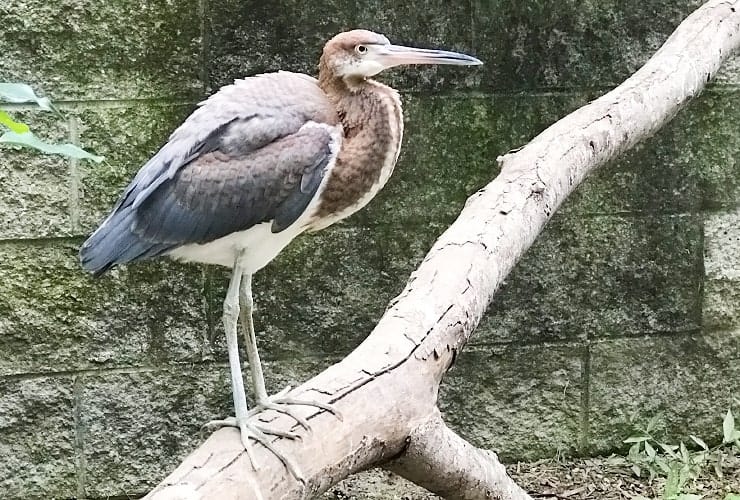
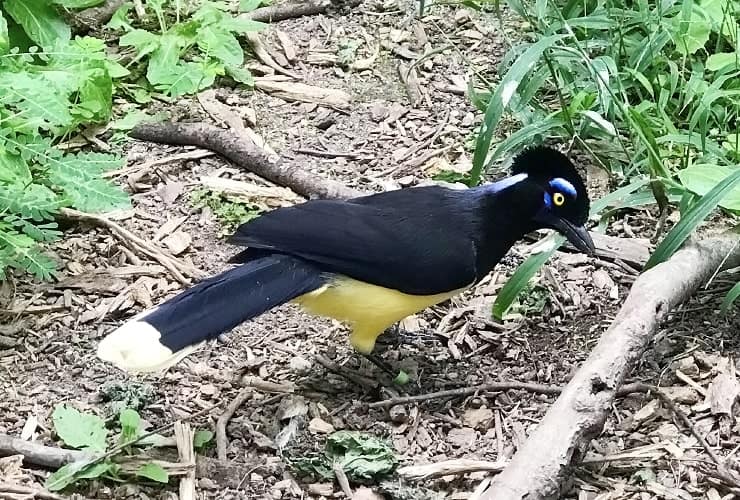
This indoor exhibit features an open area and a number of individual pens. The open section features some Elegant Crested Tinamous, Snowy-crowned Robin-chat and Emerald Dove. Along the edges are individual pens for birds that don’t mix as well with others. It starts with the African Fish Eagle (in a far-off corner a bit difficult to see), a Tricolored Heron, a Green-naped Pheasant Pigeon, a Toco Toucan and Plush-crested Jay.
Exotic Birds
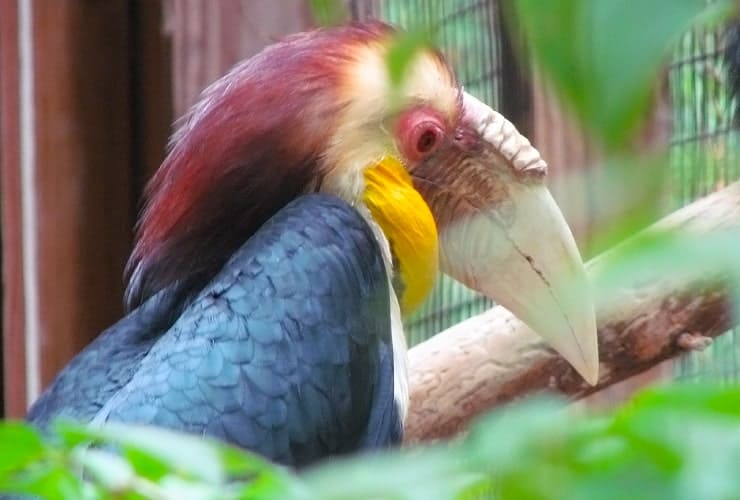
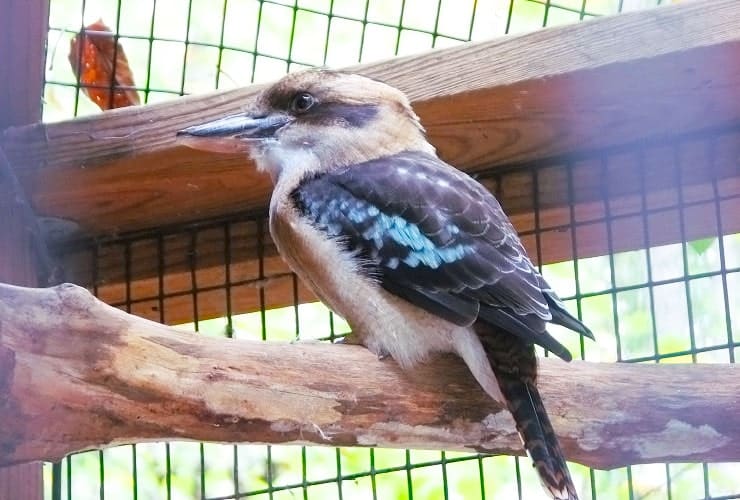
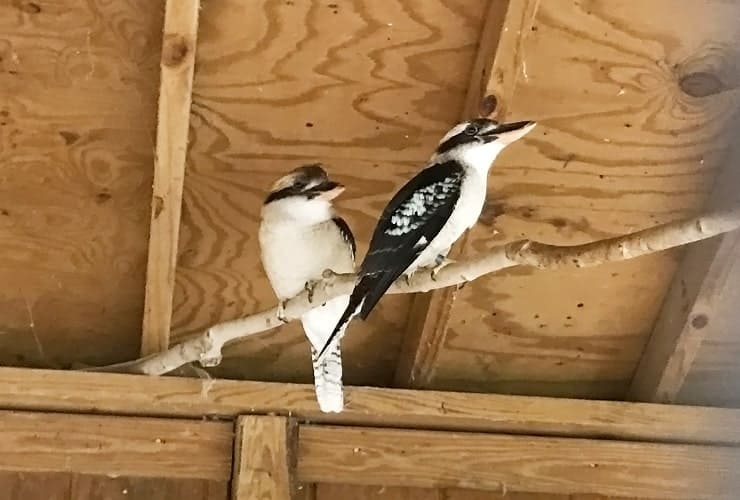
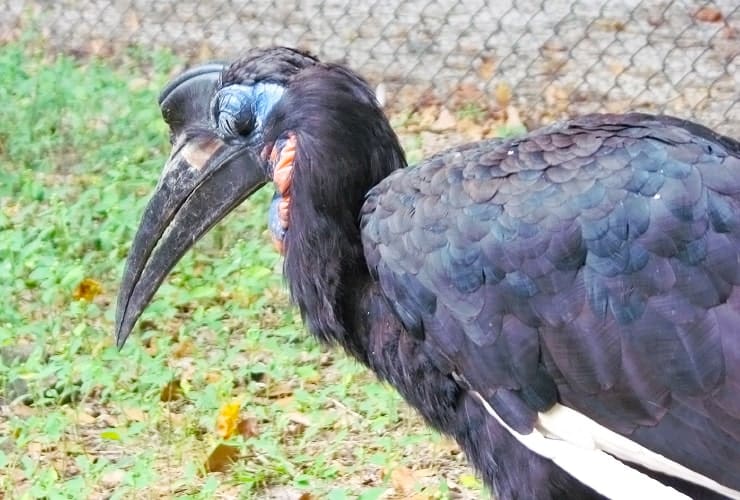
Along the outer rim are a series of large individual cages with a wonderful selection of more exotic birds. There is a Harris’s Hawk, a King Vulture and a few Australian Laughing Kookaburras, well known for their raucous, laughing call. There is a Golden Pheasant from the forests of China and a male and female Wreathed Hornbills. There is a very curious, and endangered, Sun Conure with its colorful yellow, green and orange head and wings. Finally there are a pair of Abyssinian Ground Hornbills who, should you get too close, will not hesitate to stick their bills through the fence to get your attention.
Australia
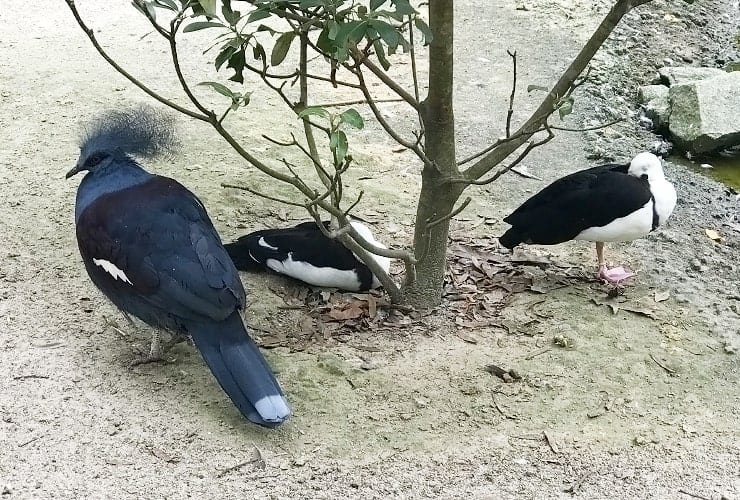
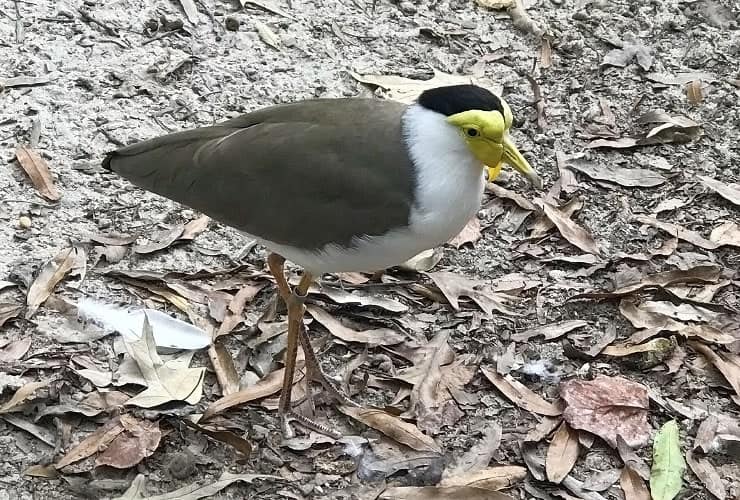
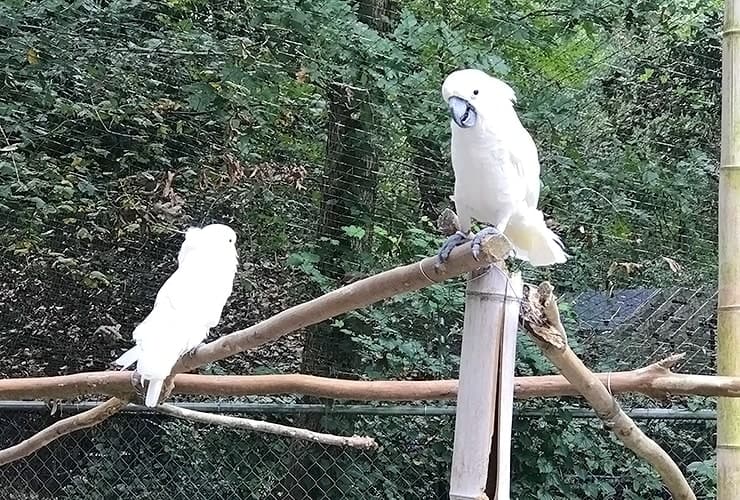
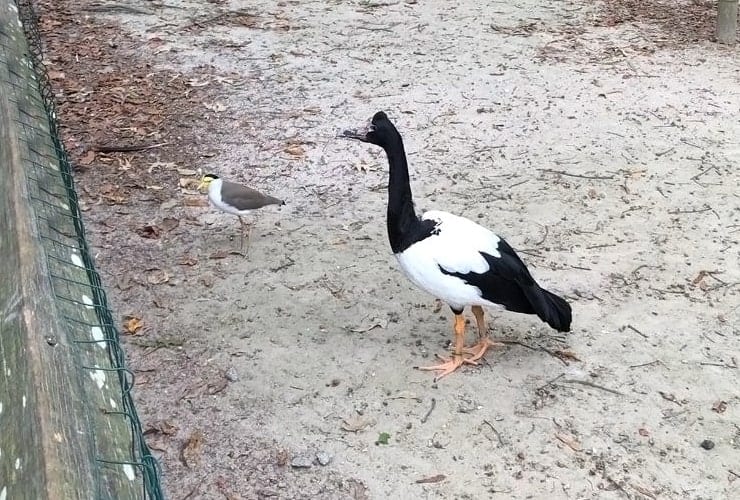
The final area in the outside loop is Australia. There is a large open area that has a small pond and a wood and bamboo trellis for sitting. There is a nice assortment of different types of birds from the exotic headdress of the Papua New Guinea Blue Crowned Pigeon to the long-legged Masked Lapwing. On the trellis sits a few Umbrella Cockatoos while beneath strolls some Black Swans, Magpie Geese and Radjah Shelduck, the only tropical shelduck in existence.
The Sylvan Heights Bird Park has no restaurant so make sure you bring your own lunch though they do have drinks, light snacks and ice cream bars in the park store. There are plenty of places to sit down and eat throughout the park. We chose the Treehouse which was perfect with its open panoramic views and off the beaten track location.
If you get a chance to visit the Sylvan Heights Bird Park, please let us know your thoughts.

